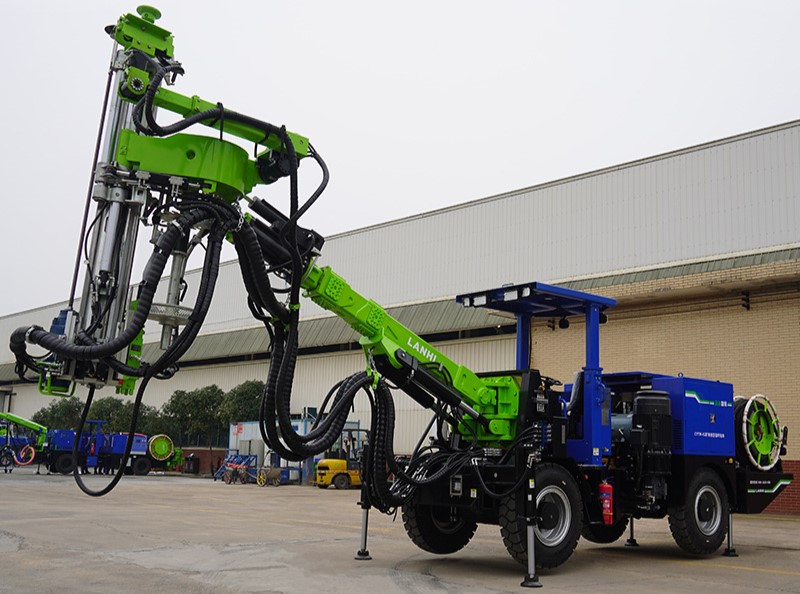What is a Surface Driller? A surface driller, also known as a surface drilling rig, is a specialized mechanical device designed to drill holes on the earth's surface for various industrial purposes. Unlike underground drilling rigs that operate in confined subsurface spaces such as mines or tunnels, surface drillers are engineered to work in open-air environments, adapting to different terrain conditions including plateaus, mountains, deserts, and construction sites.

In essence, a surface driller is a powerful piece of heavy equipment used to drill holes into the ground. It is distinct from underground or in-seam drills used in mining. The term can refer to the rig itself or, colloquially, to the crew operating it. These systems are engineered to handle diverse geological conditions, from soft soil and clay to the hardest bedrock.
I. Key Functions and Capabilities
The primary function of any surface drilling rig is to create a borehole. However, how it accomplishes this defines its specific function. The two main drilling methods are:
1. Rotary Drilling: This is the most common method for larger and deeper holes. It uses a rotating drill bit attached to the bottom of a string of drill pipes to crush and cut the rock. A drilling fluid (or "mud") is often circulated down through the pipe and back up the annulus.
2. Percussion or Hammer Drilling: This method is highly effective in hard rock. It uses a pneumatic or hydraulic hammer that delivers rapid, powerful blows to the drill bit, smashing the rock into small pieces. Compressed air is used both to power the hammer and to blow the rock cuttings out of the hole. This method is typically faster than rotary drilling in suitable conditions but is often limited in depth.
Many modern rigs are multipurpose, capable of switching between different drilling techniques (e.g., rotary, percussion, and sonic/vibratory) by changing the tooling and configuration.
II. Primary Applications and Uses
The versatility of surface drillers makes them indispensable across numerous sectors:
1. Mineral Exploration: This is a primary application. Companies use core drillers to locate and define the extent and grade of mineral deposits like gold, copper, iron ore, and diamonds. The core samples are the definitive evidence for making multi-billion dollar investment decisions in new mines.
2. Water Well Drilling: Specialized rotary drillers are used to construct water wells for municipal, agricultural (irrigation), and industrial water supply. They penetrate aquifers to provide access to vital groundwater resources.
3. Oil and Gas Exploration (Geotechnical Site Investigation): While massive offshore and land rigs drill production wells, smaller surface drillers are used in the initial exploration phase to gather seismic and geotechnical data and to drill shallow stratigraphic test holes.
4. Geotechnical Engineering and Construction: Before any major construction project—be it a skyscraper, bridge, or dam—engineers need to understand the soil and rock conditions. Surface drillers take samples to assess bearing capacity, soil stability, and the depth to bedrock, which is crucial for designing foundations.
5. Environmental Monitoring and Remediation: Drill rigs are used to install monitoring wells to track groundwater quality and the movement of contaminants. They are also used in remediation projects to inject chemicals or to drill extraction wells for removing polluted water or soil vapor.
6. blast hole drilling: In surface mining and quarrying, large, powerful rotary blast hole drill rigs create a precise pattern of holes. These holes are filled with explosives to fragment the overburden and rock, making it possible to access the valuable material beneath.
7. Geothermal Energy: Drill rigs are essential for creating boreholes for geothermal heat pumps (shallow) and for tapping into hot rock resources for power generation (very deep and demanding).
As a key equipment in industrial drilling, surface drillers define their unique position in the industrial chain with their precise drilling, efficient penetration, and strong adaptability. From the mining of mineral resources to the construction of infrastructure, from the exploration of oil and gas to the protection of the ecological environment, their wide-ranging applications provide solid technical support for the development of various industries.





